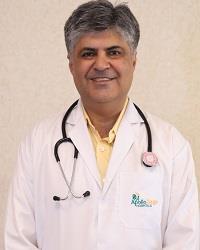Conditions for Which Adenoidectomy is Performed:
Adenoidectomy doctors recommend this procedure for various conditions, including:
1. Chronic Sinusitis: When enlarged adenoids cause persistent sinus infections, an adenoidectomy might be suggested to alleviate the symptoms and treat the condition.
2. Recurrent Ear Infections: Chronic ear infections linked with enlarged adenoids in children. They can be effectively treated through this surgery.
3. Sleep Apnoea: Enlarged adenoids can obstruct breathing during sleep. Adenoidectomy can help restore normal breathing patterns, reducing the risk of sleep apnoea.
4. Chronic Nasal Congestion: Persistent nasal blockage caused by enlarged adenoids may be relieved after an adenoidectomy.
5. Chronic Mouth Breathing and Speech Issues: Enlarged adenoids may hinder normal breathing. This leads to mouth breathing, which can then result in speech difficulties. Adenoidectomy resolves this issue.
How is Adenoidectomy Conducted at Apollo Hospitals in Ahmedabad:
At Apollo Hospitals in Ahmedabad, adenoidectomy doctors conduct the procedure following a well-structured plan:
1. Anaesthesia: The patient is administered general anaesthesia for pain-free surgery.
2. Endoscopy: The adenoid surgery doctor inserts an endoscope through the mouth to visualise the adenoids.
3. Removal of Adenoids: The adenoids are removed using specialised, precise tools while minimising damage to surrounding tissue.
4. Recovery: Post-surgery, the patient is moved to a recovery room and closely monitored.
How to Choose the Best Specialist for Adenoidectomy in Ahmedabad:
Choosing a highly experienced adenoidectomy doctor is crucial when considering this procedure. Checking credentials, seeking recommendations, and going through reviews are a few steps towards picking the best endoscopic adenoidectomy doctors.
Ahmedabad boasts of many adept adenoid surgery doctors and otolaryngologists. This offers residents a choice and potentially easier access to qualified surgeons.
Why Plan Your Adenoidectomy with Apollo Hospitals?
Apollo Hospitals in Ahmedabad houses some of the best adenoidectomy doctors who have extensive experience and advanced skills. With ultra-modern technology, exceptional patient care, clear pricing, and insurance transparency; Apollo Hospitals offers an all-rounder package for all your medical needs.
Opting for an adenoidectomy with Apollo ensures you receive the highest quality of care from accomplished ENT surgeons in a supportive environment.









 Call Now
Call Now



